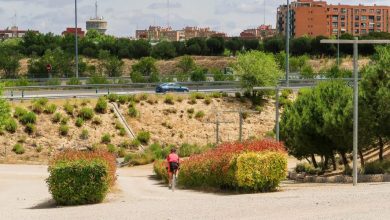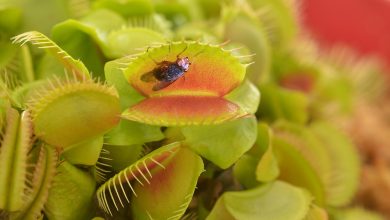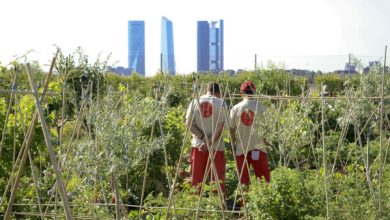bromeliad care
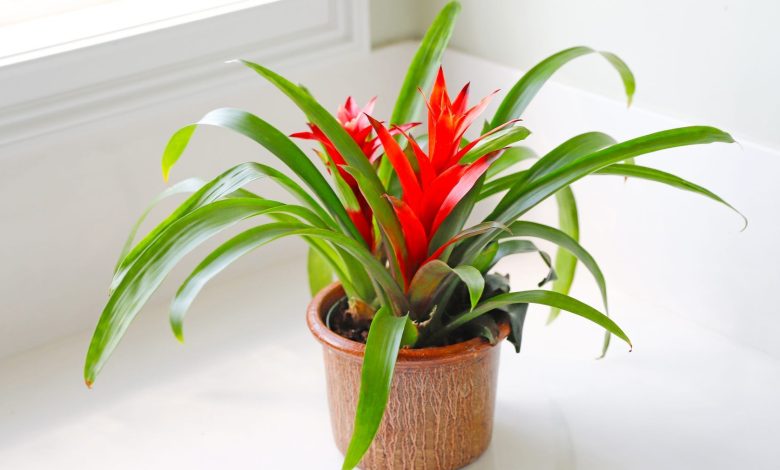
The exotic plants that we see in botanical gardens are striking for the attractive colors in their leaves and flowers, with bromeliads being the best known species in this category. Easy to grow and maintain, a bromeliad plant is ideal for indoors in the home, office, and even the garden.
From the Andes to the jungles of Brazil there is a plant species that abounds in trees and soils, attractive for its colors, characteristics and easy maintenance. This is the bromeliaceae, a family with more than 1,500 species divided into 51 categories that adapt to different types of soil and climate. For this reason, botanical gardens around the world dedicate part of their space to cultivate these species, whether they are terrestrial or epiphytic. That is, those that grow on the branches of trees to better absorb moisture.
Characteristics of the bromeliad plant
Native to South America, bromeliads are found in tropical and warm-temperate regions, extending from the southern United States to southeastern South America, with the exception of a few species in West Africa.
However, the adaptability of this plant has made it possible for it to be grown practically all over the world today; being highly valued for the design of exotic gardens, interior decoration, tropical settings and much more.
Bromeliads are perennial plants, their leaves form rosettes that can reach up to 4 meters in height. For their part, the flowers are grouped in clusters or spikes, representing the maximum attractiveness of this species, due to the different colors they can show. These range from yellow, orange and red to shades of pink and purple, with bicolor species existing.
As we mentioned earlier, this plant can grow on trees as its roots hold onto trunks and branches to absorb moisture. Likewise, the roots can be terrestrial, as they are firmly anchored to the ground. For its part, the fruit is formed as a capsule or berry, and in the case of pineapples, a sorosis is formed.
It should be noted that most bromeliads are short-stemmed. Its leaves are rigid, simple, narrow and with prickly edges, similar to a saw. The base of these wraps around the stem, opening up as it rises into a grooved sheet that ends in a sharp apex. In other species of this plant, the base of the leaves forms deposits of rainwater, humus and atmospheric dust residues, serving as a habitat for some animal species.
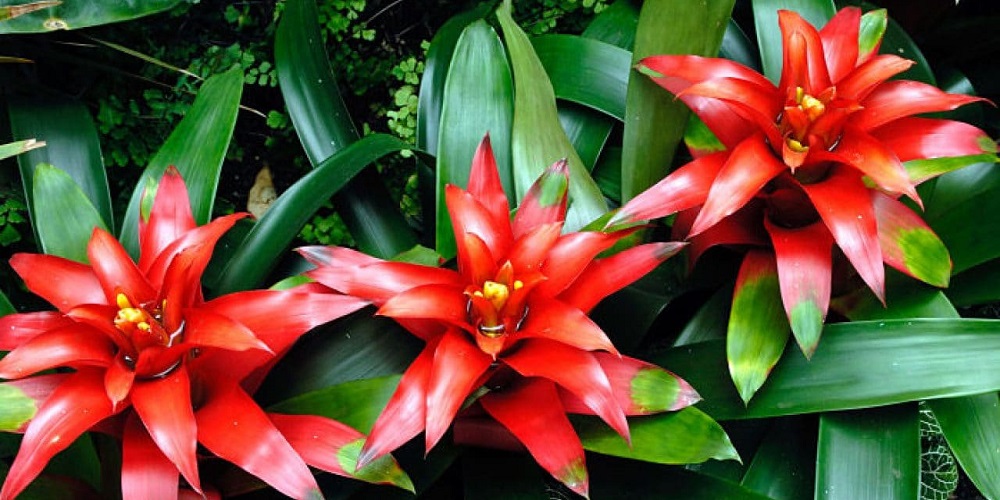
Bromeliads to decorate
Ornamental bromeliads for garden and interior decoration is our main interest. Therefore, we are going to talk about the most popular species that you can grow at home.
- Aechmea fasciata
Also known as silver vase, this plant is native to southeastern Brazil and belongs to the category of epiphytic bromeliads. In this sense, it can grow on the ground or on trees without absorbing sap or nutrients from the host plant. This species is characterized by not having stems and its size can vary from 30 to 90 cm in height. Its format is that of a basal rosette with rigid and wide leaves that arch. Its color is usually a silvery green.
On the edges of the leaves have black spines. Its flower is actually a pyramid-shaped head with small purple flowers. When ripe they turn red with pink bracts around them, remaining that way for several months. It should be noted that this plant flowers once and then dies.
At the base of the plant the children appear that can be transplanted when the mother bromeliad dies.
- Guzmania
The common name for this species is Scarlet Star, and it is the popular red bromeliad that is sold in nurseries and garden stores as an indoor plant. Generally, you can find it in flower shops throughout the year and this is because they are grown in hot greenhouses .
This type of bromeliad is very attractive, but dies after the flowering time in summer. However, new plants appear on offsets and can be transplanted into tree bark, using moss to bind the roots .
You should know that these plants need high humidity and warm temperatures, so it is important to expose them to good lighting, without direct sunlight.
Likewise, the substrates (if you click here, you will find several options to buy) for this scarlet bromeliad must be acidic, composed mainly of leaf litter, organic matter and peat .
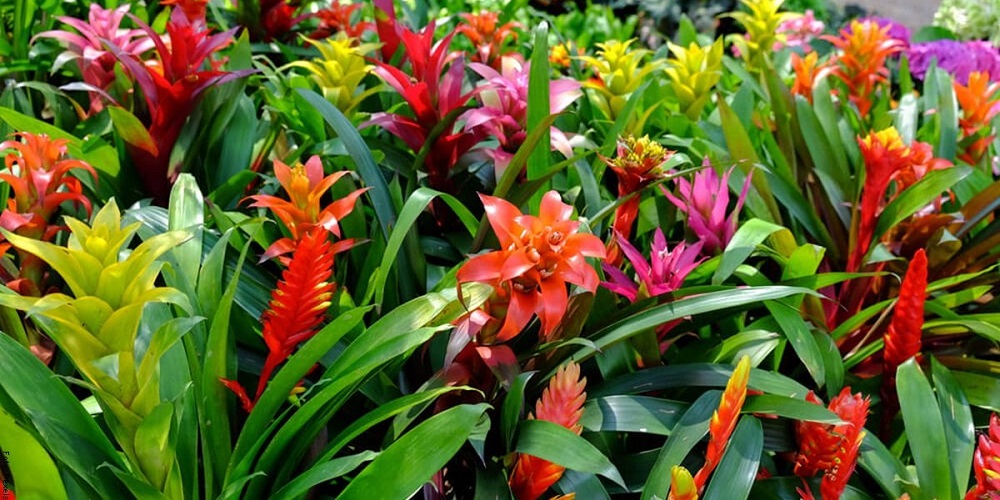
- Tillandsia Bromeliads
This plant is known as carnation of the air in some countries and is native to the southern United States, tropical South America, Argentina and Chile. Its main characteristic is the thin leaves, unlike the previous species. It is also distinguished by the beautiful fuchsia flower that sprouts in the center of the plant.
In its natural habitat, the air carnation grows on trees or rocks, but it is not a parasitic plant , it just wants to avoid direct sunlight. This species feeds on the nutrients that are in the air, specifically moisture and particles, through scales that retain water. In addition, its roots are like hooks that are attached to supports, be they rocks or logs.
Tillandsias bromeliad care is very simple. Irrigation should not be abundant, it is only enough to spray the leaves with water 3 times a week and in one of those times add foliar fertilizer. On the other hand, this plant can take years to flower and once it does, it dies. But, in the roots grow the suckers that are extracted for cultivation.
The exotic appeal of bromeliads makes us believe that they are high-maintenance plants, but they are not, and you do not need special gardening skills. You should only place them in well-lit spaces, without direct sunlight.
To know if the plant needs water, you must check that the soil around it is almost dry. Also, you can have a weekly watering plan, or in the case of the carnation of the air, spray water on its leaves 3 times a week, reducing watering in winter.
And if you want to decorate with this plant inside your home, but you don’t know where to place it, you can consider having it in the bathroom due to the humidity that accumulates in this space. However, do not forget that it needs to be a lighted room, as it is essential to keep the bromeliad healthy.

![Photo of Lantana Cuttings: [Grafts, Time, Rooting and Planting]](https://www.complete-gardening.com/wp-content/uploads/2022/08/lantana-cuttings-grafts-time-rooting-and-planting-390x220.jpg)
